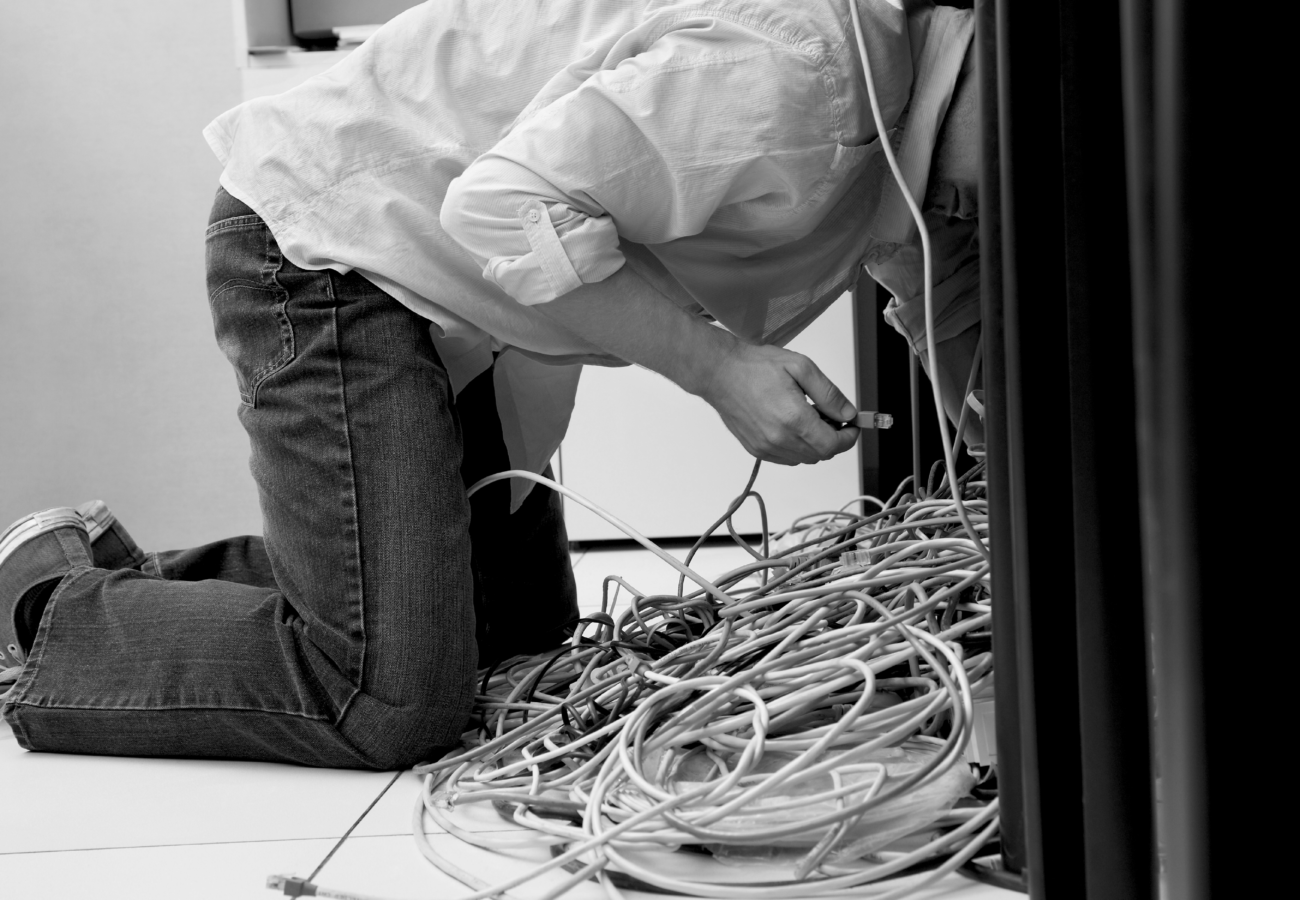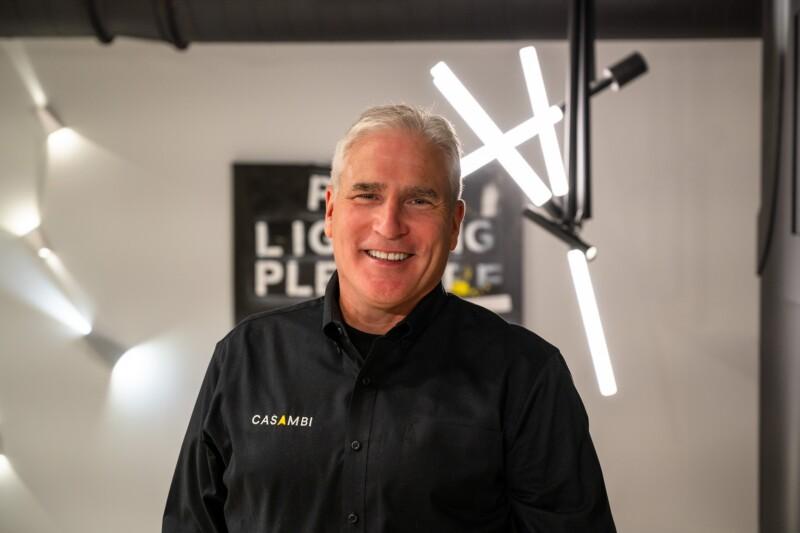Why we need to rewire lighting with software

It’s time to ditch and switch from wired to wireless lighting control. Here are three ways in which the application of Casambi tech contributes to a more sustainable world.
The UN’s Sustainable Development Goal no. 11 seeks to make cities inclusive, safe, resilient and sustainable. Of the 17 SDGs, this one is perhaps the most relevant to the built environment, the arena in which Casambi operates. However, sustainability conversations often center around the reduction of embodied energy, looking at the total energy used to create the constructed components. But in the built environment, sustainability is about designing flexibility into the spaces. It’s about efficiently repurposing buildings to keep them useful for longer. It’s about moving away from monolithic installations towards solutions that can easily adapt to evolving needs and that can be perpetually improved upon – in situ – by accumulated knowledge.
This is especially true of lighting control. Wired lighting control is a solution that must be carved out of stone. It presents monumental challenges when a building is later repurposed, new lighting designs are requested and wires must be ripped up. On the other hand, wireless lighting control solutions offer the freedom to effortlessly rewire with software.
The miniaturization of computer hardware and the introduction of robust wireless technologies have allowed software to control nearly everything. It’s penetrated every facet of life, from healthcare to kitchenware. Most industries are now run on software and internet-based services; the likes of Netflix liberated TV content from physical cable long, long ago. Light is central to life, and yet it remains one of the last bastions of the traditional wired world – which is absurd.
Casambi’s technology provides lighting designers and manufacturers with the ability to wirelessly link devices together enabling the creation of customizable smart lighting networks that are configured and controlled using the Casambi App. It’s an especially great technology for refurbishment and building projects where solutions are sought that will entirely avoid the need for wiring and surface reconstruction and that will cater to flexible lighting strategies. We provide the technology platform and services that support the transformation from wired to wireless lighting control. The products are invented by our ecosystem partners – future-oriented brands in the lighting game.
However…we have a long way to go. The facility managers’ technical rooms in large, smart buildings installed with wired lighting control resemble server farms. The work, the materials, and the number of cables required to produce a less flexible control strategy [compared with Casambi’s offering] are wholly unnecessary. Making a wired system more flexible means running more copper wiring to the luminaires and products in a network. It becomes so heavy. While the copper in the cables can be recycled, it still increases the fire load, involves more construction, and the cabling insulation utilizes single-use thermosetting plastics. Wired lighting control technology should be dead. But sadly, it will exist for a long time to come because there are so many professionals who are certified in and financially committed to the tech.
How do we overcome this aversion to change when adopting better technology? It’s a question of trust. It requires trust from the people in the value chains and in seeking out early adopters to evangelize it. It’s about building momentum through the sharing of success stories and the ramping up of global support and training programs. It’s about proving that the technology works, is easy to master, and really does provide the long-term benefits we profess. Since the company was started, we’ve managed to convert a good portion of the market to the ways of wireless, but it’s a big world out there and it takes time.
The biggest challenge we’ve faced is in switching the risk narrative. People still feel that wireless is magic. They think that wired is visible and therefore is reliable. Yet, befriend any specifier and they will share war stories from the wired trenches, where projects have not gone to plan due to miscommunication or miscalculation. ‘Better the devil you know’ isn’t always the safest way.
If we look at the specification process for wired control solutions, a lighting designer must spend time and considerable effort sourcing, selecting and listing suitable luminaires for their project. Then they study and select the compatible control tech. Plans are drawn up, the limitations of wiring are accommodated (sometimes compromising on vision) and the current load limitations on all products are calculated. Traditionally, specifiers give this information in the form of an excel spreadsheet or a marked-up printed floor plan to the commissioning engineer who interprets and then configures the system; wiring is installed on site and the expensive, laborious configuration process begins.
With Casambi, you only need to select Casambi Ready products [there are thousands to choose from], the configuration and programming happen in the app. It’s impossible to make a costly mistake because it can all be reset and rectified in the software.
We’ve also introduced Casambi Pro, which is a planning and pre-commissioning tool designed to further simplify the process of configuring lighting controls. It’s been designed for specifiers and commissioning partners who are familiar with the multitude of technical configuration properties that can apply to large lighting projects. With this tool, it is possible to specify the full logic for lighting control even before any of the devices have been installed onsite. Once you have completed the configuration in Casambi Pro, all that’s needed onsite is to pair the devices to the network and they automatically draw the configuration from the cloud. With fewer handovers, this new streamlined way of working eliminates a whole class of potential errors.
A healthier world can be found in the software too. The benefits of Human Centric Lighting (lighting that mimics natural daylight) for health and well-being are numerous. While the human body clock is complex, mastering it with Casambi control is simple and fun. Adjustable lighting strategies can be programmed and implemented in the software – whereby controls can perpetually adjust lighting to maintain a target level, reducing energy costs. And as light can affect human circadian physiology, settings can be programmed and tweaked to follow diurnal rhythms to positively affect health, alertness, and productivity.
At Casambi, over-the-air programming allows us to push new security, software features, and additional functionality out to the entire fleet of installed devices at once. It’s this software-driven mechanism that allows for constant and fast evolution, reacting to real market needs and more importantly, extending the lifespan of installed devices. As we learn we iterate.
But we really up our sustainability game by working with like-minded partners – the Casambi Ecosystem. For example, Enocean provides Casambi Ready self-powered wireless sensors and switches that replace batteries with greener energy harvesting solutions. We work with holistic service providers like Assetbook who enable clients to aggregate data from their Casambi installations to make smarter informed choices over the use of their assets. Tridonic has developed a wireless emergency lighting system based on Casambi technology. It can be integrated into pre-existing installations in compliance with current standards and without additional wiring. Such a system minimizes physical equipment and power containments, keeps ceilings clear, and allows the end user to run remote and automated system testing. Danlers provides Casambi Ready daylight sensors that can decrease artificial light output and augment it with natural light, saving up to 60% in energy use.
So, there are essentially three ways in which the application of Casambi tech enables sustainable lighting.
- By eliminating the installation of control wires, Casambi greatly simplifies the installation process and in doing so saves materials and labor. You only need to power up luminaires and pair them up with the Casambi App.
- By enabling individual control of luminaires, it’s possible to provide the optimum amount of light in the right place, at the right time. There is a greater level of accuracy that can be achieved which is rarely possible in wired installations.
- And the final benefit is flexibility. Casambi can adapt to future needs without having to reinstall wiring – a Casambi system is ready for whatever the future demands of it.
Interested in learning more about Casambi? Drop us a note, and we’ll reach out to you:


